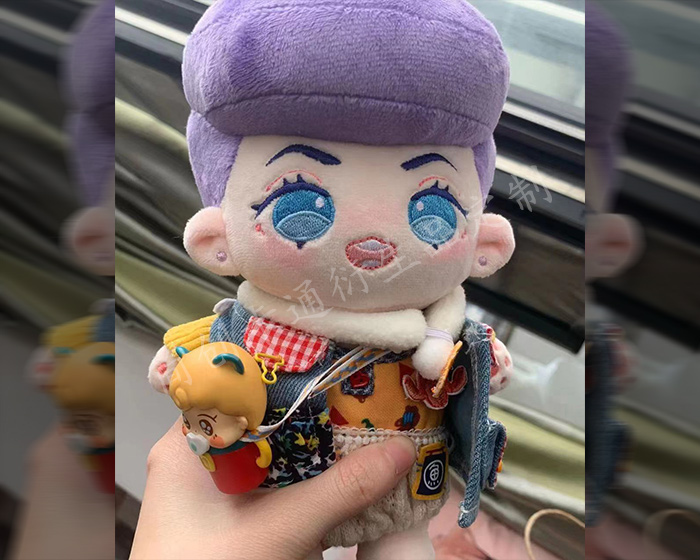Washing stuffed animals is essential for maintaining cleanliness and hygiene, especially in homes with children or pets. However, the frequency of washing can vary based on several factors, including usage, environment, and individual needs. Here’s a detailed guide on how often you should wash stuffed animals to keep them clean and safe.
1. General Guidelines
As a general rule, it’s advisable to wash stuffed animals every few months. A good starting point is to aim for washing them every three to six months. This schedule helps prevent the buildup of dust, dirt, allergens, and bacteria, keeping the toys fresh and safe for play.
2. High-Use Stuffed Animals
If a stuffed animal is a child’s favorite and is used frequently—such as being taken to bed every night or carried around during playtime—more frequent washing is recommended. In such cases, consider washing these toys monthly or every couple of weeks, especially if they show signs of dirt or odors. Regular washing can help prevent the accumulation of sweat, saliva, and pet dander, which can lead to hygiene issues.
3. After Illness or Allergies
If someone in the household has been sick, it’s wise to wash all stuffed animals that may have come into contact with them. Germs can linger on toys, and washing them can help minimize the spread of illness. Additionally, if anyone suffers from allergies, it may be beneficial to wash stuffed animals more frequently—every couple of weeks—to reduce allergens like dust mites and pet dander.
4. Environmental Considerations
The environment in which the stuffed animals are kept can also affect washing frequency. In areas with high levels of dust, pollen, or pet hair, stuffed animals may require more frequent cleaning. If you live in a humid climate, consider washing them more often as humidity can encourage mold and mildew growth, especially in toys that have been washed previously and not dried properly.
5. Material and Construction
The materials and construction of the stuffed animal can influence washing frequency. Some plush toys are made with delicate fabrics or embellishments that may not withstand frequent washing. Always check the care label for specific washing instructions. For these delicate toys, spot cleaning might be a better option between washes.
6. Signs of Need for Washing
Apart from a set schedule, pay attention to signs that a stuffed animal needs washing:
-
Visible Dirt or Stains: If you notice any visible dirt or stains, it’s time to wash the toy.
-
Odors: A musty or unpleasant smell is a clear indicator that washing is necessary.
-
Allergens: If allergies seem to be aggravated in the presence of stuffed animals, washing them can help reduce triggers.
7. Establishing a Routine
Creating a cleaning routine for stuffed animals can help ensure they stay fresh. Consider assigning specific wash days, such as at the beginning of each season or during spring cleaning. Involving children in this process can also teach them about cleanliness and hygiene.
Conclusion
In conclusion, washing stuffed animals regularly is important for maintaining hygiene, especially for frequently used toys. A general guideline of every three to six months, with adjustments for high-use toys, environmental factors, and signs of dirt or odor, can help keep these beloved items clean. Establishing a routine and being attentive to the condition of the toys will ensure that stuffed animals remain safe, cuddly, and free from allergens and bacteria.
The following are some examples of plush toys that our factory customizes for customers. Check out if there is one that you like best.
-
Custom Animal Plush
-
Cute Plush Doll
-
Custom Stuffed Animals
-
Plush Toy
-
Plush Dolls
-
Custom Stuffed Dolls
-
Custom Plush Toy
-
Cotton Dolls
-
Weighted Plush Toys
-
Cute Stuffed Animals
-
Custom Pet Stuffed Animal
-
Warmies Stuffed Animals
-
Weighted Stuffed Animal
-
Soft Toys
-
Plush Stuffed Doll
-
Custom Stuffed Dolls
-
Plush Maker
-
Bear Stuffed Toy
-
Anime Plush
-
Custom Stuffed Animal
-
Anime Plush
-
Custom Plush Toy
-
Personalised Stuffed Animal
-
Plush Animal Toys
-
Custom Plush Makers
-
Custom Plushies
-
Toy Manufacturer
-
Rag Doll Making
-
Custom Toys
-
Dog Plush Toys
-
Custom Rag Doll
-
Stuffed Animals
-
Custom Plush
-
Custom Plush Dolls
-
20cm Cotton Doll
-
Jojo Plush
-
Custom Doll
-
Jojo Doll
-
Large Plush Toys
-
15cm Cotton Doll
-
Dumpling Plush
-
Cotton Doll


























